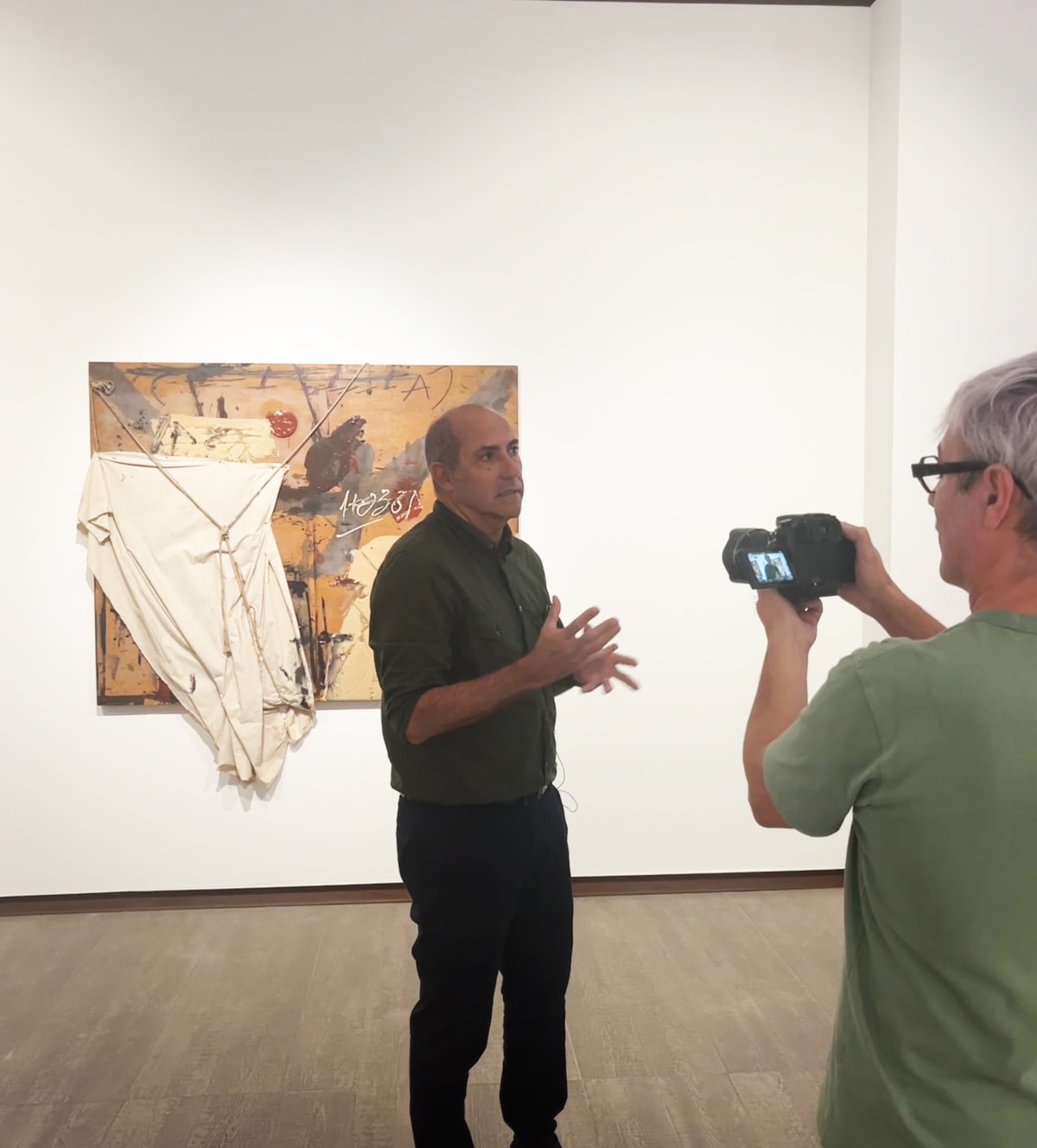Tàpies i Miró. We come from a silence: PARIS - BARCELONA
In these rooms we highlight two pieces by Joan Miró. On the one hand, the Sobreteixim (1960) is incipient evidence of investigation with the intervention of textile techniques and materials in what we could call the second “assassination of painting”, this time led by Miró at the end of the 1960s and throughout the following decade, during which he produced a series of monumental tapestries, in addition to the famous 1973 burnt canvases. On the other hand, Peinture (Painting) recalls a cloth to dry the painter’s brushes, which radicalizes the very subject of the painting. Indeed, Tàpies also did something similar during those years. The 1969 Caixa d’embalar (Packing Case) and the 1975 Composició amb corda i roba (Composition with Cloth and Rope) “boldly simplify the state of modern painting to convert it into a pure and simple object which, in the case of Tàpies, goes even deeper into the programme of reinvention of painting that he started with the materials”, in the words of Carles Guerra. In the last room you can enjoy a screening of the full version of the film El sopar (Dinner) (1974-2018), by Pere Portabella, which, as well as the initial part in Catalan and the conversation in Spanish, includes the addition made by Portabella in 2018. We also include a small example of the collaboration carried out by the two artists with Raimon at the end of the Franco regime, when posters, book covers and album sleeves helped disseminate a gestural aesthetic that was almost equivalent to a signature or a manifesto.


-
 Barcelona, exhibition view, Tàpies i Miró. Venim d'un silenci, 2023, photo credit: Foto Gasull
Barcelona, exhibition view, Tàpies i Miró. Venim d'un silenci, 2023, photo credit: Foto Gasull -
 Barcelona, exhibition view, Tàpies i Miró. Venim d'un silenci, 2023, photo credit: Foto Gasull
Barcelona, exhibition view, Tàpies i Miró. Venim d'un silenci, 2023, photo credit: Foto Gasull -

Paris, exhibition view, Tàpies et Miró. Nous venons d'un silence, 2023
Photo credit: Aurélien Mole
-

Paris, exhibition view, Tàpies et Miró. Nous venons d'un silence, 2023
Photo credit: Aurélien Mole










